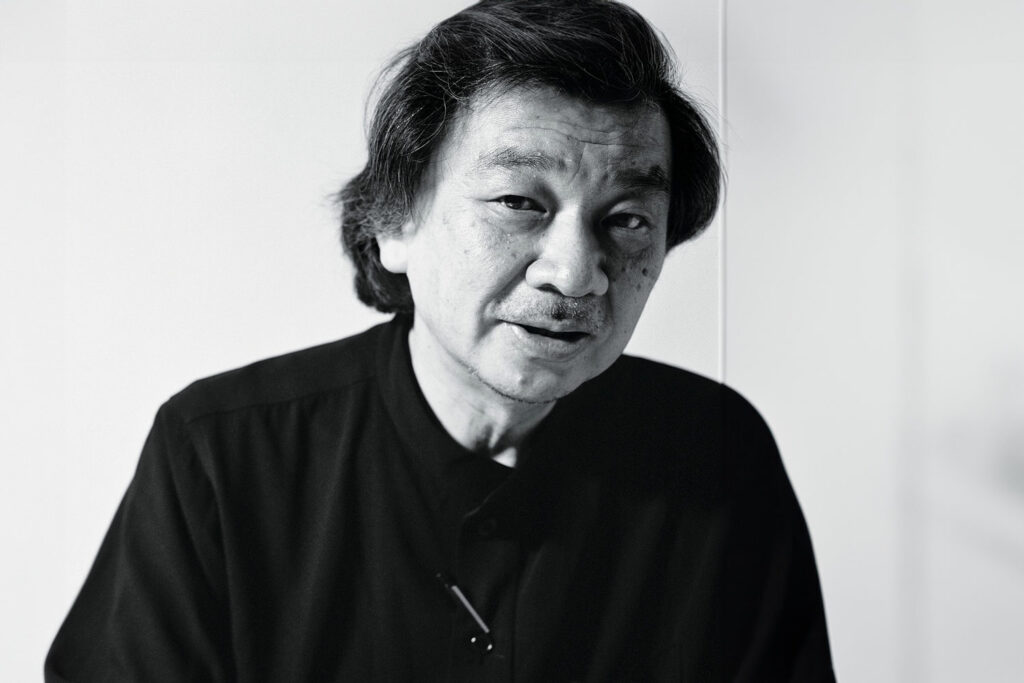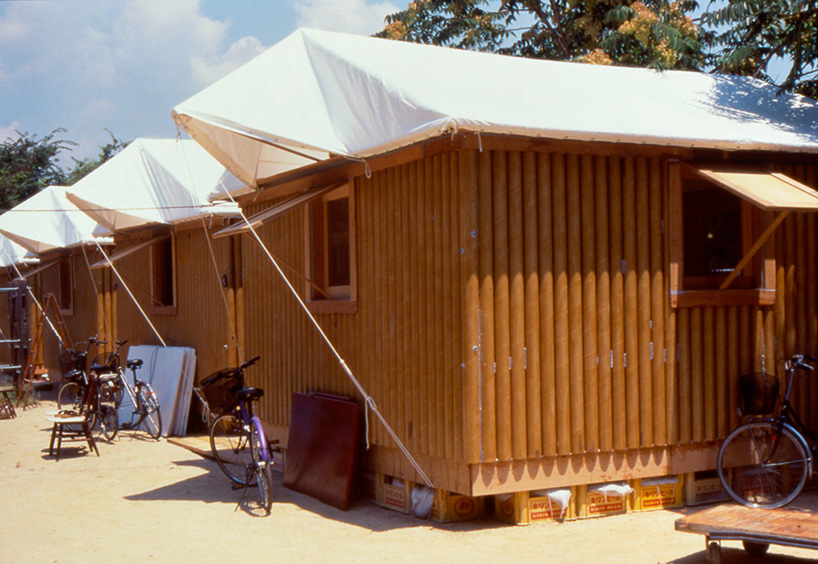Unlock Premium, Members-Only Content
Your source for the most relevant updates in sustainable construction
Introduction to Shigeru Ban
Shigeru Ban, a name synonymous with revolutionary architecture, merges creativity with a deep sense of humanitarianism. Born on August 5, 1957, in Tokyo, Japan, Ban has carved a niche in the architecture world with his innovative use of materials and a strong commitment to sustainable design and disaster relief. Winning the prestigious 2014 Pritzker Prize, Ban’s work is celebrated not just for its aesthetic appeal but for its profound impact on society.
Shigeru Ban: Early Life and Inspiration
Raised in a culturally rich family—his father a businessman with a love for classical music and his mother a designer of haute couture clothing—Ban’s early environment was steeped in creativity. His childhood home, a traditional Japanese wooden house, was a playground of imagination, frequently visited by carpenters whose tools and techniques fascinated the young Ban. This exposure to traditional craftsmanship deeply influenced his later architectural style.

Shigeru Ban: Educational Background and Influences
The Journey Through Education
Ban’s architectural journey began at Tokyo University of the Arts, where he initially intended to study. However, his path took a pivotal turn after encountering the works of John Hejduk, the dean of the Cooper Union School of Architecture. Inspired by Hejduk’s innovative designs, Ban shifted his aspirations overseas, leading him to eventually study at the Cooper Union in New York.
Shigeru Ban: Influential Figures and Philosophical Foundations
During his time at Cooper Union, Ban was influenced by several prominent architects and educators, including Ricardo Scofidio and Peter Eisenman. These interactions helped mold his architectural philosophy, which emphasizes minimalism and the innovative reuse of materials. Ban’s design ethos is marked by a desire to not just create spaces but to solve problems, reflecting a blend of artistic form and practical functionality.
Shigeru Ban’s story is not just about buildings but about pushing the boundaries of what architecture can achieve. From his early days inspired by traditional carpentry to his global impact on sustainable building practices, Ban’s journey reflects a relentless pursuit of innovation and compassion. His work, characterized by both ingenuity and empathy, continues to inspire and challenge the architectural world.
Philosophy and Design Approach
Shigeru Ban’s architectural philosophy is a blend of aesthetics, function, and social responsibility. His approach challenges conventional thinking about what buildings should be made of and what purposes they should serve. His philosophy extends beyond mere construction; it is a manifesto for sustainability and innovation, aiming to benefit society, particularly those in dire need.
Shigeru Ban: The Essence of Minimalism and Sustainability
Ban is a proponent of minimalist architecture, focusing on the essentials of space, light, and form. His design ethos is deeply rooted in the Japanese tradition of simplicity and functionality, advocating for the use of space in ways that are both efficient and aesthetically pleasing. This minimalist approach is coupled with a strong commitment to sustainable practices. Ban often utilizes recycled materials, such as paper tubes, which not only reduce environmental impact but also lower construction costs.
Innovative Reuse of Materials
One of the most distinctive aspects of Ban’s work is his innovative use of unconventional materials. His signature material, the paper tube, is a testament to his commitment to environmental sustainability. These tubes provide a disaster-resistant, affordable, and sustainable building solution, particularly in emergency situations. This innovative use of paper not only challenges traditional architectural practices but also reflects Ban’s philosophical stance on the responsible use of resources.
Shigeru Ban and Innovative Use of Materials
Shigeru Ban’s choice of materials is not just a facet of his design aesthetic, but a cornerstone of his innovative approach to architecture. His pioneering use of paper tubes as a structural material has set a new benchmark for ecological and sustainable architecture.
Paper as a Building Material
Ban’s experimentation with paper tubes began in the early 1990s. He discovered that these tubes, often used in textile factories and then discarded, could be repurposed as a strong, versatile, and cost-effective building material. The use of paper tubes can be seen in many of his projects, from temporary exhibition pavilions to permanent structures like the Tamedia Office Building in Zurich. These projects showcase the durability and practicality of paper as a structural element.
Key Projects Using Innovative Materials
| Project Name | Location | Material Used | Description |
|---|---|---|---|
| Cardboard Cathedral | Christchurch, NZ | Paper tubes | A transitional cathedral after 2011 earthquake |
| Paper Log Houses | Kobe, Japan | Paper tubes | Temporary housing post-1995 earthquake |
| Tamedia Office Building | Zurich, Switzerland | Wood & Paper | Permanent office structure showcasing material innovation |
Wood and Fabric: Other Favorites
Apart from paper, Ban frequently uses other materials like wood and fabric. His approach often involves weaving these materials into the structural fabric of buildings, creating not only visually stunning architectures but also functionally innovative solutions. The Centre Pompidou-Metz, for instance, features an undulating wooden roof that is both a structural marvel and a signature aesthetic of Ban’s design language.
Shigeru Ban’s work with materials is not merely about building structures but about crafting spaces that are environmentally responsible, aesthetically pleasing, and fundamentally humane. His innovations continue to inspire a generation of architects to think differently about the materials they use and the spaces they create.
Shigeru Ban: Major Projects and Architectural Milestones
Shigeru Ban’s career is dotted with significant projects that not only demonstrate his innovative use of materials but also his commitment to social causes and environmental sustainability. These projects range from private residences to large public structures and disaster relief initiatives.
Iconic Structures Around the World
Ban’s architectural genius is showcased in several landmark projects across the globe. The Cardboard Cathedral in Christchurch, New Zealand, stands as a symbol of resilience and hope, constructed after the devastating 2011 earthquake. Similarly, the Centre Pompidou-Metz in France is celebrated for its intricate latticework and sustainable design principles, using timber and other eco-friendly materials.
Shigeru Ban’s Notable Projects
| Project Name | Location | Year | Highlights |
|---|---|---|---|
| Cardboard Cathedral | Christchurch, NZ | 2013 | Transitional cathedral made of cardboard tubes |
| Centre Pompidou-Metz | Metz, France | 2010 | Eco-friendly design with timber structure |
| Naked House | Saitama, Japan | 2000 | Minimalist home with clear corrugated plastic walls |
| Aspen Art Museum | Aspen, USA | 2014 | Wooden framework and woven screen facade |
Disaster Relief Efforts
A significant part of Ban’s work is his dedication to providing quick, efficient, and sustainable solutions for disaster-stricken communities. His paper tube shelters have been used in numerous countries following earthquakes, tsunamis, and other calamities. This work not only demonstrates his architectural skill but also his humanitarian spirit.
Shigeru Ban and Contributions to Disaster Relief
Shigeru Ban has been profoundly active in the field of disaster relief, where his innovations in temporary housing have provided shelter and dignity to thousands of disaster victims worldwide.
Innovative Emergency Shelters

Following the 1995 Kobe earthquake, Ban introduced the “Paper Log House” for Vietnamese refugees in Japan. These shelters, made primarily from recycled paper tubes and beer crates, have been replicated in various disaster zones including Turkey, India, and the Philippines.
Shigeru Ban’s Disaster Relief Projects
| Disaster Event | Location | Year | Shelter Type |
|---|---|---|---|
| Kobe Earthquake | Kobe, Japan | 1995 | Paper Log Houses |
| Gujarat Earthquake | Gujarat, India | 2001 | Paper tube and bamboo shelters |
| Haiti Earthquake | Port-au-Prince, Haiti | 2010 | Cardboard and shipping container shelters |
A Global Impact
Ban’s commitment to using architecture as a tool for social change has redefined how the architectural community views its role in humanitarian efforts. His work with the Voluntary Architects Network (VAN) has mobilized professionals and students from around the world to assist in building these critical structures, fostering a sense of global responsibility within the architectural profession.
Shigeru Ban’s influence extends beyond traditional architectural boundaries, establishing him as a pioneer in both design innovation and social humanitarian efforts. His projects continue to inspire and challenge the status quo, making him a true leader in the field of modern architecture.
Shigeru Ban: Awards and Recognitions
Throughout his illustrious career, Shigeru Ban has earned numerous accolades that underscore his contributions to architecture and society. These awards highlight his commitment to innovative design and his humanitarian efforts around the globe.
Prestigious Architecture Awards
Shigeru Ban’s most notable recognition is the Pritzker Architecture Prize, which he received in 2014. Often referred to as the “Nobel Prize of Architecture,” this award acknowledged his innovative use of materials and his dedication to humanitarian causes through architecture. Ban’s ability to craft beautiful, functional spaces out of unorthodox materials like cardboard and paper not only challenges architectural norms but also addresses urgent global issues like disaster recovery and housing crises.
Recognition in Sustainability and Humanitarian Work
Ban’s work has also been recognized for its impact on sustainability and social good. His temporary housing solutions for disaster zones have not only provided shelter but have also sparked conversations about sustainable building practices worldwide.
Shigeru Ban: Critiques and Challenges
Despite his accolades, Shigeru Ban’s career has not been without criticism. His innovative approaches and unusual material choices have often been met with skepticism from some corners of the architectural world.
Architectural Criticism
While Ban’s use of materials like paper tubes is celebrated for its ingenuity and environmental friendliness, some critics question the long-term durability and practicality of these materials in permanent structures. However, Ban’s projects have proven resilient, and his ongoing work continues to address these concerns through rigorous testing and research.
Balancing Aesthetics and Functionality
Ban’s minimalist designs are sometimes seen as too austere or impractical for certain uses. Balancing aesthetic simplicity with functional demands is a continual challenge in his projects. Ban addresses these concerns by integrating feedback from users and continuously refining his designs based on practical experiences.
Overcoming Skepticism
The unconventional nature of Ban’s materials and methods has required him to constantly advocate for their viability. Each successful project helps to overcome skepticism and paves the way for wider acceptance of sustainable and innovative architectural practices.
Shigeru Ban’s journey through the world of architecture illustrates a dynamic interplay between innovation and tradition, earning him both acclaim and critique. His commitment to addressing social and environmental issues through architecture continues to influence the field and inspire future generations of architects.
Shigeru Ban: Conclusion
Shigeru Ban’s impact on architecture extends far beyond the structures he has built. His innovative use of unconventional materials like paper and his dedication to humanitarian causes through his designs have set new benchmarks in the field.
A Model for Future Generations
Ban’s work serves as a powerful reminder that architecture can transcend traditional boundaries to address profound human needs. His ability to blend aesthetic beauty with practical solutions for disaster relief has not only provided shelter to those in immediate need but has also offered a model of how architecture can contribute to solving global challenges.
Reflection on Shigeru Ban’s Architectural Philosophy
Reflecting on Ban’s career offers valuable insights into how creativity and compassion can intersect in architecture. His philosophy—centered on minimalism, sustainability, and innovation—challenges both current and future architects to rethink how their designs can impact the world, not just in terms of physical spaces but also in social and environmental contexts.
Shigeru Ban’s journey is a testament to the power of architecture as a force for good. His continued influence encourages ongoing dialogue and innovation within the architectural community, ensuring that his legacy will inspire for decades to come.
If you want to learn about our consultancies in Portuguese language, click here.
Unlock Premium, Members-Only Content
Your source for the most relevant updates in sustainable construction